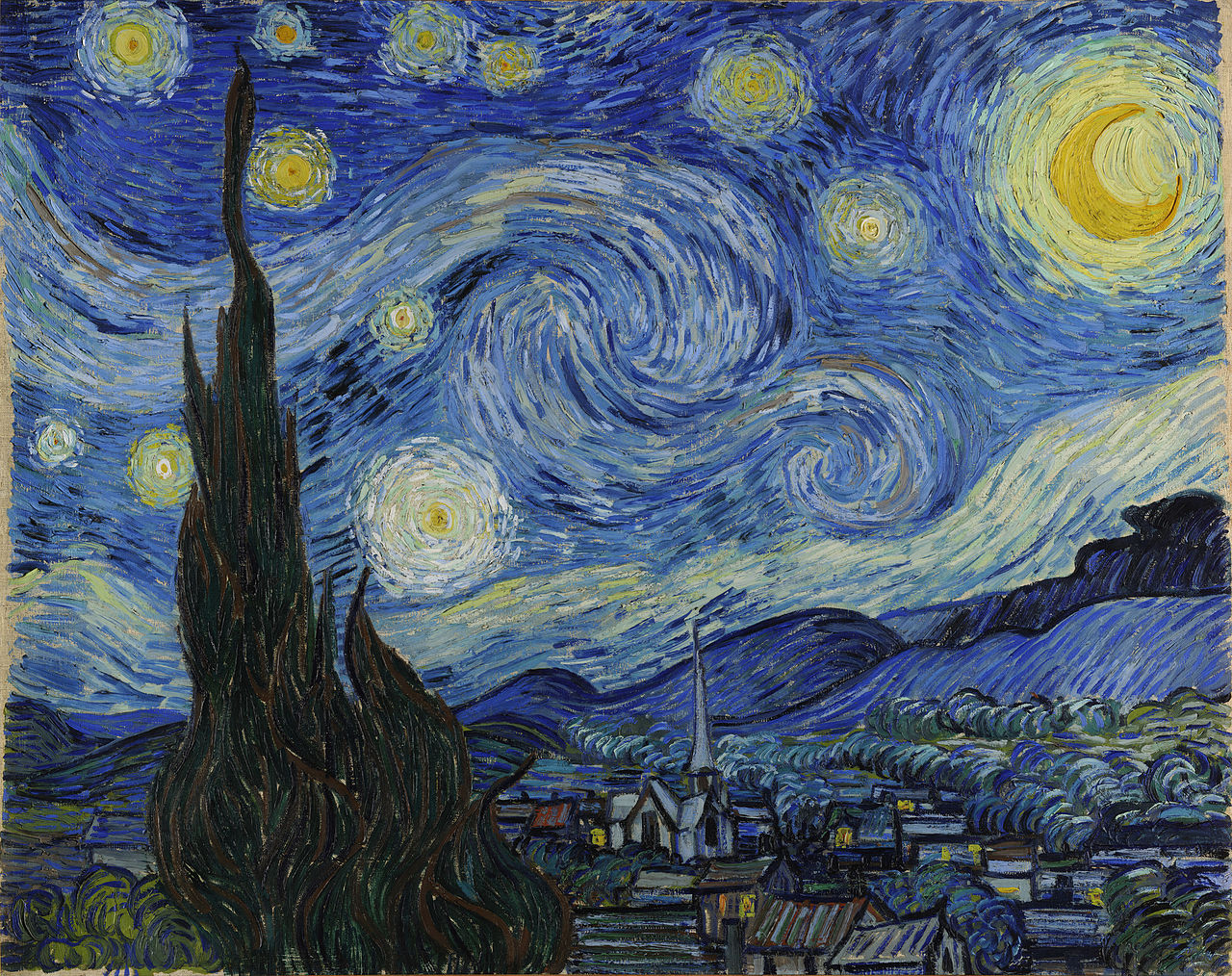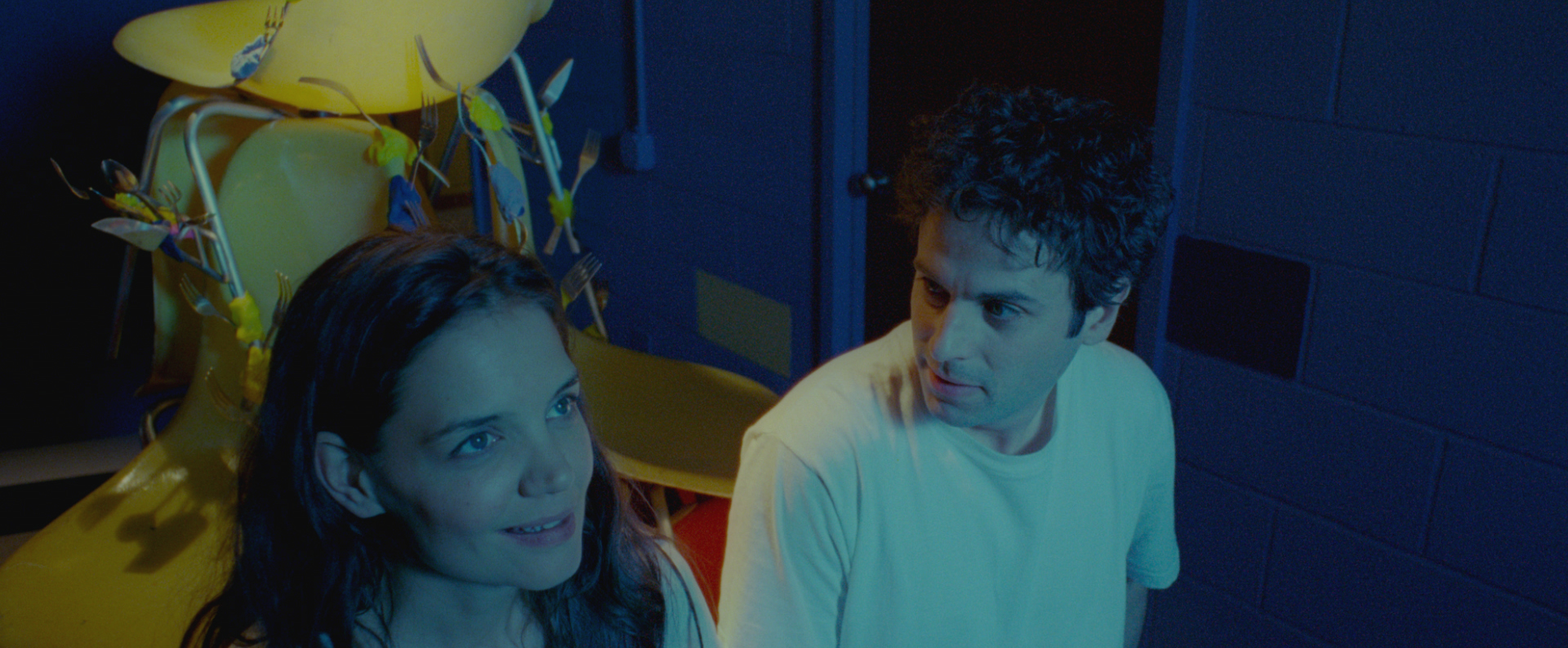Ask the Director: In “Touched With Fire,” how did you visualize the bipolar experience on camera?
First-time feature director Paul Dalio directed, edited, scored and wrote Touched With Fire (2016) based on his own experience with bipolar disorder. Dalio wanted to express “the beauty and the horror” of the bipolar condition as he lived it, Dalio told ScreenPrism. Whereas most films depict the condition through an outsider’s view, he felt a special duty to tell his story from the inside. To this end, Dalio’s film follows the perspectives of two poets, Carla (Katie Holmes) and Marco (Luke Kirby), who fall in love at the hospital while being treated for bipolar.
“It’s impossible to portray bipolar as it is through their eyes if you don’t have it,” Dalio told ScreenPrism. While other filmmakers may have firsthand experiences with bipolar loved ones, “They’re still looking at them from the outside, and they’re still in some way shaded by all the clinical books and all the presumptions of what’s going on in their mind, and so it’s still a little bit distancing. You might feel sorry for them. You might even feel love for them, but in a pathetic way, in a pitying way, like they’re a sick person. You won’t see the magnificence in them.”
Through Touched With Fire, which is executive produced by Spike Lee, Dalio wants his audience to “see through these people’s eyes because, if they do, they’ll see the beauty through their eyes.” The task raised the important question of how to create visuals that draw us in to Carla’s and Marco’s points of view. So how did Dalio visualize what “seeing through bipolar eyes” looks like onscreen?

Paul Dalio on the set of Touched with Fire (2016)
“I created the whole visual palette around Starry Night because it was perfect, being humanity’s most beloved image of the sky, seen through a sanitarium window with manic eyes,” Dalio said. Drawing out the blues, yellows and oranges of Van Gogh’s painting, Touched with Fire associates Carla with the sun, casting her in yellows and giving her the last name “Lucia,” meaning light, while linking Marco to the moon, putting him in blues and giving him the rap name “Luna,” or moon. The framework of Starry Night fit with Dalio’s idea of Carla and Marco as “the sun and the moon coming together, making each other illuminate each other and the sky. And so everything was designed around that.” He added, “When they both meet in the hospital, the colors merge into the yellows and blues that initiate the Starry Night, and it becomes a pastel palette.”

Van Gogh’s Starry Night
Meanwhile Dalio and the Director of Photography, Kristina Nikolova, who is also Dalio’s wife, found “cinematic elements that create what it actually looks like through manic eyes. So when they were manic, it was wide-angle lenses. The camera would be very not symmetrical to the ground and at first handheld because they’re both kind of on edge, and they’re both lost at the beginning.”
Dalio also tried to imbue the visuals with symbolic weight to create the feeling that every object and moment has underlying meaning. “When you see things in bipolar lenses, everything is a little bit mythical,” he said. “Everything has a symbolic meaning. So there was a lot of imagery of being lost in the woods. So [Marco]’d be thriving in the lunacy of the moonlight with these crooked branches of trees that you would see in Sleepy Hollow or a Brothers Grimm fairytale, and [Carla]’d be lost in the woods as the lamp would be casting shadows onto the wall of these crooked, jagged trees.”
When Carla and Marco are first hospitalized, the camera framing is more symmetrical, Dalio said, but when they start becoming more manic, the camera is almost never stable or level. As Carla and Marco experience intense mania together, the visuals reflect this shift in numerous ways. “It goes from video to film,” Dalio said, “And the camera’s on steadycam, so it’s more fluid. It’s flying with them. I would have this steadycam operator kind of fly with them so it’s never symmetrical to the ground. It’s kind of like a plane flying behind them. [We] also progressively strip away any production design that’s not celestial-looking while darkening the lights and having brighter and brighter spotlights. Slowly the world transforms in front of your eyes as they stay up late at night, and the spotlights suddenly become stars in Starry Night, and suddenly there’s nothing around you that’s not celestial-looking. It all looks like planets, and eventually the camera is spiraling around the characters instead of just following behind them. I would tell them don’t stop moving and don’t stop spiraling.” In conjunction with Holme’s and Kirby’s manic performances, “their colors turned from yellow and blue to white and white as they were blazing, illuminating each other.” Dalio said he also based his score around celestial instruments, the glockenspiel for Marco and the celesta for Carla, adding synthesizers when he wanted to create associations with outer space.

Carla (Katie Holmes) and Marco (Luke Kirby) stay up late in the hospital in Touched with Fire (2016)
The aesthetics take a major shift in the sequences when Carla and Marco fall into depression outside of the hospital. “The color palette of a depression is the opposite,” Dalio said. “We’d use tilt-shift lenses, where things are out of focus, and very desaturated colors. It feels like you’re in a black-and-blue fog, but it also happens to naturally mirror the Starry Night imagery. They also took a little piece of each other home because they swapped color schemes, as she was in blues and grey [and him in yellows].” Meanwhile the mythic imagery continues in the depression sequences. While depressed, Carla “took on the mythic image of being drowning in the abyss, while he was being swallowed into the belly of the beast of childhood regression as he goes into his parents’ attic, the ribs of the whale.”
In addition to their colors and mythic associations, Dalio said the sun and moon symbols in the story also remind us of bipolar’s link to natural rhythms. “Bipolar, being something that is bound to nature and bound to the boundless, wild elements of nature, runs with the seasons,” he said. “When it’s bright moonlight, it does keep the lunatic up, and that’s why they’re called ‘lunatic’—they can’t sleep. And the sun, if you have too much light, too much sunlight, it will activate you. So them being part of this boundless nature, that feeds off each other, it’s a way of breaking off from their own bodies into something bigger than their bodies, which is basically the metaphor of holding a level of fire and energy which is too much for their bodies to sustain, that burns, outblazes their bodies.” He notes that the sun and the moon rotate around each other not just through Carla and Marco but also in the stages of the story: “The first mania is more of the moon and the nighttime. The second mania is more the sun and the daytime, blazing bright with the sun and the flowers and the trees.” Most of the film also follows a “cycle of the seasons, fall to fall.”

Carla (Katie Holmes) and Marco (Luke Kirby) in a manic state in Touched with Fire (2016)
Through these cycles of nature, the mythic associations and the Starry Night imagery, Dalio sought to visualize the internal thought processes of the characters, while his camera techniques for both the manic and depressive stages imitate the day-to-day visual and mood experience of those states.

